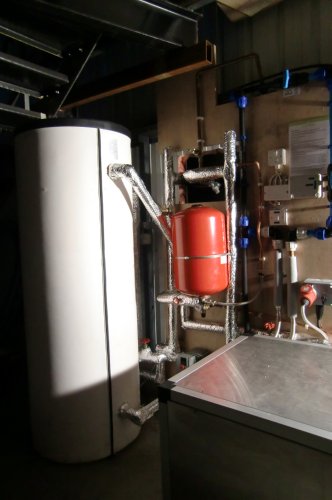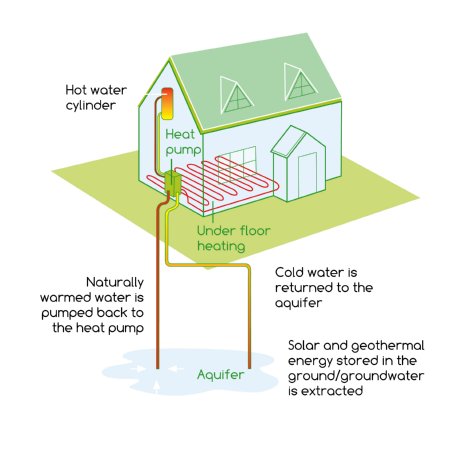 It is becoming increasingly clear that alternatives to the consumption of oil and gas must be implemented if the escalating costs of energy and the increasing concern for the environment are to be appeased.
It is becoming increasingly clear that alternatives to the consumption of oil and gas must be implemented if the escalating costs of energy and the increasing concern for the environment are to be appeased.
The benefits, both economic and environmental, of utilising ground source heat options are clear to see. Mechanical Ventilation with Heat Recovery will often halve the heating requirement of a building, and geothermal heat provides a clean, green, economic and environmentally friendly and sustainable alternative to oil and gas. A heatpump used with ground source heat can extract free heat from the ground and can be a financial investment due to the Government’s Green Deal.
The first stage of design is always a full assessment of heating requirements. This process includes a heating loss calculation, which exceeds the calculations for building control and enables precise heating requirements to be specified. In order to enable the optimum heat extraction system to be designed within constraints of capital budget, an assessment of local geology and hydrogeology will also be required.
It is essential that the total geothermal solution is designed, installed and commissioned by an MCS qualified installer with expertise within the company of heating engineers, geologists and hydrogeologists. The design must include ventilation, heat recovery, insulation, underfloor heating, screeding, floor coverings, boreholes and heat pump as minor changes to any element can affect the efficiency of the system.
The efficiency of a heat pump is directly proportional to the difference in temperature between the source heat and the heating water. By optimising the design of the underfloor heating and floor covering, water at a mean temperature of 30°C can produce a heat emission of more than 50w/sqm with a room temperature of 21°C, which is more than adequate for most houses. Efficient systems will significantly reduce heating costs, increase property value and reduce carbon footprints.
A number of different methods can be used to extract heat from the ground, depending on the geology and hydrogeology. An open loop system abstracts groundwater from a borehole sunk into an aquifer and pumps water directly through heat pumps to release the heat for distribution into a building. Open loop heat pumps can achieve a Coefficient of Performance (CoP) of 5 or 6 when serving an efficient underfloor heating system. Since the groundwater abstracted is around 10° to 12°C, the heat pump does not have to work hard to raise the temperature of the underfloor heating water to 30°C or less.
If groundwater is not present at reasonable depths then the closed loop method can be used. This involves the circulation of water and antifreeze through pipes installed vertically through boreholes. These boreholes are drilled to the depth required to extract the heat from the earth and carry it to the heat pump.
In October 2010, the government confirmed its intention to introduce the Renewable Heat Incentive (RHI). In June 2011 the tariffs for non domestic (which includes systems serving 2 or more residences) heat pumps were set at 4.5p per KW inflation linked and payable for 20 years. Domestic customers can receive a Premium Payment of £1250 in 2011 and will be eligible for ongoing tariff payments as part of the Green Deal due in 2012.
The RHI tariffs ensure that a properly installed heatpump system provides low cost heating and an excellent financial investment.






